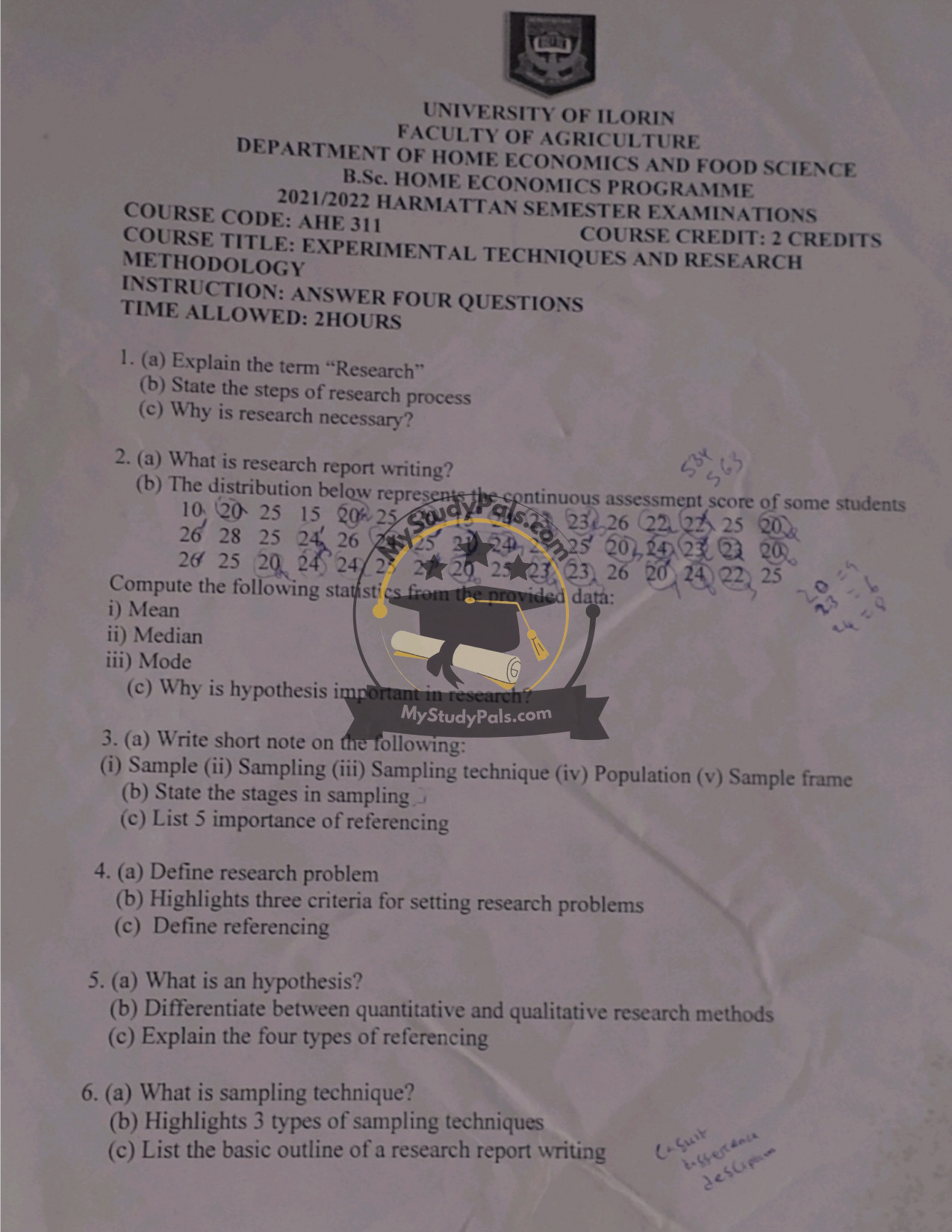ANWSER
—
Question 1:
(a) Research is a systematic, scientific investigation aimed at discovering new knowledge, validating existing theories, or solving specific problems. It involves structured methods of data collection, analysis, and interpretation to answer questions or test hypotheses.
(b) The steps of the research process are:
1. Identifying the research problem
2. Reviewing relevant literature
3. Formulating hypotheses or research questions
4. Designing the research methodology
5. Collecting data
6. Analyzing data
7. Interpreting results
8. Drawing conclusions and making recommendations
9. Writing the research report
(c) Research is necessary because it:
– Advances knowledge in various fields.
– Solves practical problems.
– Informs policy and decision-making.
– Validates or refutes existing theories.
– Improves practices in professions like agriculture, medicine, and education.
—
Question 2:
(a) Research report writing is the process of documenting the methodology, findings, and conclusions of a research study in a structured format. It communicates the research work to others and ensures transparency and reproducibility.
(b) Computed statistics from the given data:
– Mean (Average): Sum of all scores ÷ Number of scores = 1125 ÷ 48 ≈ 23.44
– Median (Middle value): After arranging data in order (10, 15, 15, 20, …, 28), the median is the average of the 24th and 25th values = 24
– Mode (Most frequent value): 25 (appears most often).
(c) A hypothesis is important in research because it:
– Provides a clear focus for the study.
– Guides the research design and data collection.
– Enables testing of relationships between variables.
– Forms the basis for drawing conclusions.
—
Question 3:
(a) Short notes:
– (i) Sample: A subset of a population selected for study.
– (ii) Sampling: The process of selecting a sample from a population.
– (iii) Sampling technique: Methods used to select samples (e.g., random, stratified).
– (iv) Population: The entire group of individuals or items under study.
– (v) Sample frame: A list or source from which the sample is drawn.
(b) Stages in sampling:
1. Define the population.
2. Identify the sampling frame.
3. Choose a sampling technique.
4. Determine the sample size.
5. Collect data from the sample.
(c) Importance of referencing:
1. Avoids plagiarism.
2. Credits original authors.
3. Supports arguments with evidence.
4. Allows readers to verify sources.
5. Demonstrates depth of literature review.
—
Question 4:
(a) A research problem is a specific issue, gap, or question that a study aims to address. It forms the foundation of the research.
(b) Criteria for setting research problems:
1. Clarity: The problem should be clearly defined.
2. Feasibility: It must be researchable within constraints (time, resources).
3. Significance: It should contribute to knowledge or practice.
(c) Referencing is the practice of acknowledging sources of information used in research to give credit and allow traceability.
—
Question 5:
(a) A hypothesis is a testable statement predicting the relationship between variables in a study.
(b) Quantitative research uses numerical data and statistical analysis (e.g., surveys), while qualitative research explores non-numerical data (e.g., interviews) to understand phenomena.
(c) Four types of referencing:
1. APA (American Psychological Association): Used in social sciences.
2. MLA (Modern Language Association): Common in humanities.
3. Chicago/Turabian: Used in history and some publications.
4. Harvard: Author-date style for various disciplines.
—
Question 6:
(a) Sampling technique refers to the method used to select a representative group from a population for study.
(b) Three types of sampling techniques:
1. Random Sampling: Equal chance for all members.
2. Stratified Sampling: Population divided into subgroups (strata), then sampled.
3. Convenience Sampling: Selecting readily available participants.
(c) Basic outline of a research report:
1. Title
2. Abstract
3. Introduction
4. Literature Review
5. Methodology
6. Results
7. Discussion
8. Conclusion/Recommendations
9. References
—


